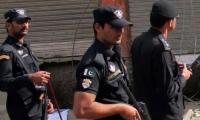The PTI’s win in southern Punjab in Election 2018 was strengthened by its promise to create a new province for the people of the ‘Seraiki-speaking belt’. The question is: do we need more provinces? The answer is yes.
First, it is the most effective way to address the dissatisfaction among smaller provinces against the federation, especially Punjab, which is historically perceived as the proverbial ‘big brother’ that dominates decision-making at the centre.
The creation of at least two provinces from the territories that fall under Punjab would be a step in the right direction, and more provincial units ought to be created along ethnic, linguistic or geographical lines. Our federal structure doesn’t promise any constitutional guarantee to the provinces that their boundaries won’t be altered. There are ample possibilities to create a second province within Punjab. Moreover, well-defined provinces can also be carved out of upper and lower Sindh, the western and southern parts of Khyber Pakhtunkhwa, and southern Balochistan.
Second, the sheer size of Punjab has made it increasingly difficult to govern from Lahore. Refiguring provincial boundaries has been recognised as an essential internal adjustment for better management. Since Partition, India has created 17 new states on a similar rationale. But we have been procrastinating on this issue for far too long.
Third, creating more provinces that are smaller in terms of size and population, with each having more provincial autonomy, will strengthen federalism in the country. Voices raised in Balochistan have a loud resonance today. But similar demands from a smaller province would only signify a form of local dissent.
After a new province is carved out, Punjab would no longer be seen as a dominating entity that commandeers the resources of other provinces. Similarly, creating more provinces in Sindh could solve various internal difficulties. The centre would be able to focus on national issues rather than regional matters, which could be easily resolved at the provincial level.
Along with the creation of new provinces, the original reasons for the misgivings between provinces must also be addressed. In the past, Pakistan was de facto governed by the centre as a unitary state. The relationship between the centre and the units wasn’t that of two sovereigns “independent of each other and yet dependent” but of a delegator and delegatee. The centre only consulted the province when it deemed necessary and, therefore, got used to compliance from the political hierarchy. This mindset will have to change as well.
However, there are many obstacles in creating the ‘South Punjab’ province. First, the procedure for altering provincial boundaries in Pakistan is cumbersome, and requires an amendment to the constitution and the approval of two-thirds of the members in the concerned provincial assembly. The process to create new provinces can be made easier by giving power to parliament to alter provincial territories through simple laws. But, for the time being, the PTI will require a two-thirds majority in Punjab as well as in the National Assembly and Senate.
Secondly, if the PTI follows this path, a new chief minister, speaker and deputy speaker would have to be elected for both provinces.
The province of ‘South Punjab’ would most likely comprise Bahawalnagar, Bahawalpur, Lodhran, Multan, Muzaffargarh, Layyah, Bhakkar, and Mianwali in the north, and Rahim Yar Khan, Rajanpur, Dera Ghazi Khan in the south. A province containing 15 districts must have an assembly of 105 seats, out of which the PTI has 63 while the PML-N has 41. It is likely that the chief minister of the new province would be from the PTI.
However, ‘northern Punjab’ (which would probably be called North Punjab) would have 21 districts, which means an assembly of 171 seats, out of which currently the PML-N has 88 seats, the PTI has 76, the PML-Q has six and there is one seat held by an independent. Therefore, the PML-N could form a government here and appoint its own chief minister. This is a risk which, as a matter of principle, the PTI might have to take. It will be a true test of whether the PTI puts its principles above political expediency.
What would the position of the opposition be under these circumstances? It wouldn’t want to give credit to the PTI for the creation of ‘South Punjab’ because that will make it a PTI stronghold in the next election. Conversely, the opposition might face public anger if it rejects the proposal. The PML-N could, therefore, support the creation of the new province, but make it conditional on carving out more provinces in other parts of the country. Such a condition may not be acceptable to the PPP and will certainly produce a political impasse. Without a consensus on this issue, it will be difficult to realise the dream of ‘South Punjab’.
The third major hurdle in the creation of the new province was well-stated by the late Akbar Bugti. According to received information, when asked why Punjab shouldn’t be carved into smaller provinces to address the qualms of others, he had once replied, “You Punjabis are very intelligent. By creating two or more provinces in Punjab, you also intend to control the Senate by having a majority there”. This is because equal representation of all four provinces in the Senate has been emphasised under the constitution. So, if a new province is carved out of Punjab, the two ‘Punjabs’ will collectively have twice as many senators as other provinces.
One way of getting around this issue is that the new province shouldn’t get a separate quota in the Senate till the next election, and the existing senators can be divided among the two provinces. The other possibility is to simultaneously create two provinces in all existing provinces so that parity is maintained in the Senate.
To make ‘South Punjab’ a reality, political parties must accept that the new province has a distinct national identity and there is no ‘Punjabi conspiracy’ at play. Constitutional issues can be resolved, but political considerations may serve as stumbling blocks.
The writer is a Supreme Courtadvocate who served as a caretaker federal minister in 2018, and was the president of the Supreme Court Bar Association in 2015-16.
On April 2, India tabled bill in Lok Sabha, proposing sweeping changes to management of Waqf properties
Trump had even imposed tariffs on uninhabited Heard and McDonald Islands near Antarctica
Some would say this is the call of fate when time comes back to haunt and when blushes are visible
Actions of ICE are sweeping and have targeted not only int'l students holding visas but also green card holders
According to Trump, US is earning $2 billion per day in newly-introduced trade tariffs
Negligible contribution of e-commerce underscores persistent reluctance towards digital adoption







